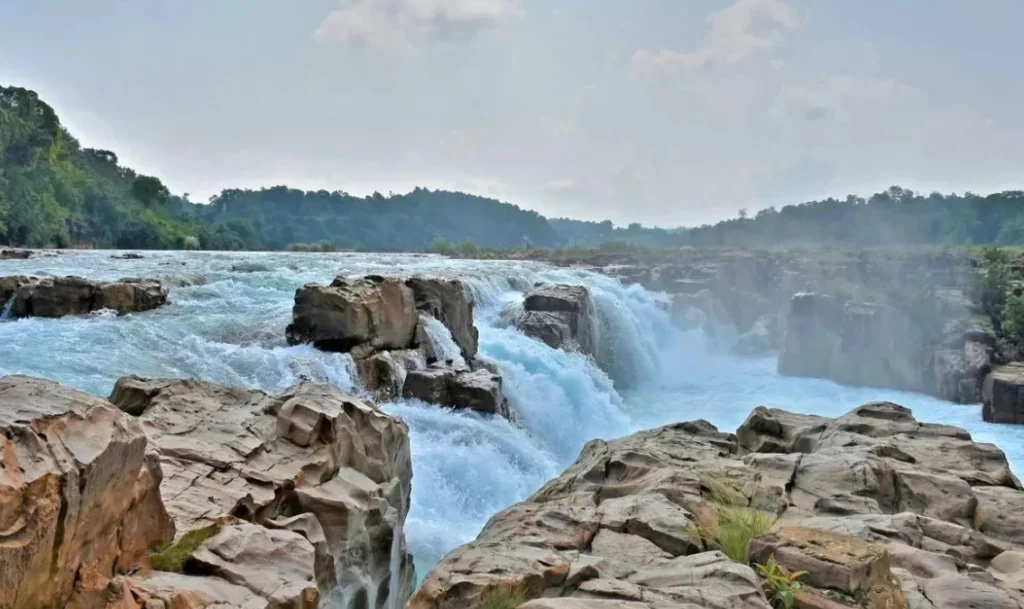“Explore Dima Hasao, a haven of breathtaking hills, rich tribal culture, serene waterfalls, and lush valleys. Discover the heart of nature in this hidden gem of Assam.”

Dima Hasao: Serene Hills, Tribal Heritage & Hidden Gems
Dima Hasao District, formerly known as North Cachar Hills, is a picturesque region located in the northeastern part of India, specifically in the state of Assam. This district is nestled in the lap of the Eastern Himalayas, making it a land of stunning natural beauty and cultural diversity. Covering an area of approximately 4,888 square kilometers, Dima Hasao is a land of contrasts, where lush green valleys meet towering peaks, and traditional customs blend with modern aspirations.
The district is blessed with a rich and diverse topography. The Barail Range, a prominent part of the Eastern Himalayas, runs through the district, offering breathtaking views of majestic mountains and dense forests. The district’s landscape is crisscrossed by numerous rivers and streams, with the Jatinga River being the most significant. These water bodies not only add to the region’s scenic beauty but also serve as vital resources for the local population.
Dima Hasao is home to a diverse range of flora and fauna. Its forests are a treasure trove of biodiversity, housing a variety of rare and endangered species. The district is a paradise for birdwatchers and wildlife enthusiasts, with the Jatinga Bird Sanctuary being a popular destination for birdwatching. The sanctuary is famous for the mysterious bird behavior known as “bird suicide,” where birds are inexplicably drawn to certain areas during specific weather conditions.
The district is also inhabited by several indigenous communities, each with its unique customs, traditions, and languages. The Dimasa people are the largest ethnic group in Dima Hasao and have a rich cultural heritage. Their vibrant festivals, such as the Bushu Dima festival, showcase their traditional dances, music, and cuisine. The district administration, in collaboration with local communities, has been working to preserve and promote these unique cultural aspects.
Despite its natural beauty and cultural richness, Dima Hasao faces several challenges. One of the primary concerns is connectivity. The rugged terrain and frequent landslides make it difficult to maintain road and rail links to the rest of Assam and the country. The government has been working on infrastructure development projects to address these issues and improve accessibility.
Another challenge is sustainable development. The district is rich in natural resources, including tea and coal, but the exploitation of these resources must be balanced with environmental conservation efforts. Sustainable tourism and eco-friendly practices are being promoted to ensure the long-term well-being of the region.
In recent years, Dima Hasao has witnessed a gradual transformation. Educational institutions and healthcare facilities have improved, bringing better opportunities for the local population. The district administration, along with NGOs and community-based organizations, is actively engaged in promoting education, healthcare, and skill development programs.
Famous Places in Dima Hasao District
Dima Hasao District, in the northeastern state of Assam, boasts a collection of remarkable places that showcase its natural beauty and cultural heritage. Here are some of the famous places to explore in Dima Hasao:
Haflong: Known as the “Switzerland of the East,” Haflong is the district headquarters and a charming hill station. It offers panoramic views of lush green valleys and is an excellent base for exploring the surrounding areas.
Maibong: A historical and archaeological treasure, Maibong is known for its ancient ruins and inscriptions, including the Maibong sculpture. It’s a place where history comes to life amidst serene surroundings.
Jatinga: This village is renowned for the unusual bird behavior known as “bird suicide.” During certain weather conditions, birds are inexplicably drawn to specific areas, making it a unique attraction for birdwatchers and researchers.
Mahur: Located on the banks of the Mahur River, this town is steeped in cultural significance. It’s known for its temples, including the historic Maibong Kalibari and Maibong Durga Temple.
Panimur Waterfall: This picturesque waterfall is a hidden gem within the district. Surrounded by dense forests, it’s a tranquil spot for nature enthusiasts and photographers.
Haflong Lake: A serene lake surrounded by hills, Haflong Lake offers boating facilities and is an ideal spot for a peaceful picnic with family and friends.
Fiangpui Garden: This well-maintained garden is a great place to relax and enjoy the scenic beauty of Haflong. It’s particularly beautiful during the flowering season.
Hot Water Springs: The district has several natural hot water springs, such as Garampani and Dehangi, known for their therapeutic properties. These springs are set in picturesque surroundings, making them perfect for relaxation.
Dima Hasao Cultural Complex: Located in Haflong, this cultural complex showcases the rich heritage and traditions of the district’s indigenous communities, including the Dimasa people. It’s a great place to learn about the local culture.
Landscape of Barail Range: The Barail Range runs through the district and offers breathtaking views of rolling hills and dense forests. Trekking and hiking in this region are popular activities for adventure seekers.
These famous places in Dima Hasao District offer a diverse range of experiences, from natural wonders to historical and cultural landmarks. Whether you’re a nature lover, history enthusiast, or simply seeking tranquility, Dima Hasao has something to offer every traveler.
Read More :-
